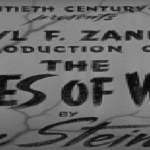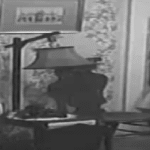Assignment Outerspace, a 1960 Italian science fiction film originally titled Space Men, is a low-budget yet ambitious exploration of humanity’s early imaginings of life beyond Earth. Directed by Antonio Margheriti, the film attempts to fuse journalistic curiosity, futuristic adventure, and moral inquiry into a single cinematic experience. While constrained by its modest production values, it offers a window into the period’s optimism and anxiety about space exploration, technological advancement, and the place of human values in a rapidly changing universe.
The story centres on Ray Peterson, a space journalist assigned to cover life aboard the spaceship Alpha 2, which orbits the Earth. He is tasked with documenting humanity’s activities in space, serving as the audience’s surrogate as he enters a world of disciplined military order, scientific mission, and rigid command structures. From the start, Peterson is presented as something of an outsider, both figuratively and literally. His presence on Alpha 2 is met with suspicion by the ship’s crew, especially its commanding officer, Captain George, who views the journalist as an intruder more likely to get in the way than contribute meaningfully.
Peterson’s personality is at odds with the strict environment aboard the ship. He is brash, opinionated, and questioning — qualities that rub the disciplined crew the wrong way. His journey becomes as much about proving his worth as it is about the unfolding events in space. This sets the stage for a subtle character arc, where he transforms from an unwelcome observer to an active participant in a mission that could determine the fate of the Earth.
As Peterson settles into life aboard the space station, the film gradually introduces the main threat. A rogue spaceship, designated as Alpha 1, has gone out of control. Travelling at immense speed and beyond human command, it is on a collision course that could destabilise not just satellite operations but the safety of Earth itself. The nature of Alpha 1 is peculiar — it is surrounded by a powerful radiation field that destroys any vessel that comes too close. This deadly barrier adds urgency to the unfolding crisis and forces the characters to weigh moral and practical considerations.
Peterson’s role evolves as he becomes entangled in the plan to neutralise Alpha 1. Despite his lack of technical expertise, he volunteers to take part in the dangerous mission, an act that begins to earn him the respect of the crew. His decision is not just an impulsive attempt to be a hero but comes from a growing sense of responsibility. In this way, the film presents a classic redemptive arc, showing how someone dismissed as a nuisance can rise to meet extraordinary circumstances.
The journey to intercept Alpha 1 brings with it the film’s central themes — the tension between humanity’s reach for the stars and the limitations of its tools, the danger of machines that escape control, and the question of whether progress without wisdom can lead to disaster. The film, though simplistic in dialogue and pacing, is clearly trying to ask these bigger questions, and in doing so it gestures towards the deeper philosophical undercurrents often found in more celebrated works of science fiction.
The mission itself is fraught with danger. Several attempts to get close to Alpha 1 end in destruction, underscoring the power of the runaway ship and the radiation it emits. The stakes are high, not just for the men in space but for humanity as a whole. Eventually, Peterson devises a plan to destroy the ship from within, using a daring and near-suicidal approach. It is in this climactic sequence that the film finds its emotional centre. The action may not be technically impressive by modern standards, but the drama is sincere. Peterson becomes the unlikely hero, sacrificing his safety in the hope of saving countless lives.
The destruction of Alpha 1 is both literal and symbolic. It represents the triumph of human courage over mechanistic terror, of individual bravery over uncontrollable technology. Peterson survives, and with his return comes a shift in how he is seen by the others. The crew, once sceptical and cold, now regard him with respect. His journey from outsider to hero is complete, and it carries with it the film’s moral message — that even those who seem misplaced or misunderstood can contribute meaningfully when guided by conscience and courage.
Visually, the film reflects its budgetary constraints, with miniatures, models, and sets that appear dated even by the standards of its time. Yet there is a certain charm in its earnestness. The ships, costumes, and sets are clearly crafted with care, and the black-and-white cinematography gives the film a crisp, otherworldly aesthetic that suits its subject matter. The use of lighting and shadows creates a sense of depth and mood, particularly in the scenes aboard the space station and during the final confrontation with Alpha 1.
The characters are broadly drawn, with clear distinctions between duty-bound officers, the curious journalist, and the background technicians who keep the mission running. Though not deeply developed, they each serve a purpose within the story. Captain George, initially rigid and cold, softens as the mission progresses, while Lucy, the lone female character and a communications officer, provides a more emotional counterpoint to the otherwise masculine environment. Her relationship with Peterson, though only lightly sketched, hints at a human connection amidst the isolation of space.
The dialogue is functional rather than poetic, often veering into exposition, but it maintains a brisk pace. There are moments of humour, tension, and introspection, enough to keep the viewer engaged even when the action slows. The film’s score, composed of orchestral flourishes and eerie motifs, enhances the feeling of being adrift in space and heightens the drama without overwhelming it.
In essence, Assignment Outerspace is a film that punches above its weight. It does not possess the polish of later science fiction classics, nor does it offer groundbreaking effects or narrative complexity. What it does offer is a glimpse into a world of speculative imagination, where space is both a frontier and a mirror — reflecting the hopes, fears, and moral dilemmas of its time. Its hero is not a soldier or a scientist, but a man whose only real weapon is his willingness to ask questions and take risks for the greater good.
Though often overlooked in discussions of early science fiction cinema, the film remains a testament to the genre’s enduring appeal. It tells a story of redemption, unity, and human ingenuity, all set against the vast and mysterious backdrop of outer space. Despite its flaws, or perhaps because of them, it stands as a sincere attempt to grapple with the unknown — and in doing so, it earns its place in the long history of mankind’s cinematic voyage beyond Earth.







